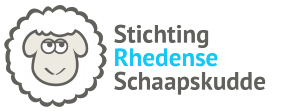The Rhedense Schaapskudde foundation
As sheep farming became less profitable in the late nineteenth and early twentieth centuries many flocks of sheep and sheepfolds disappeared. The Rhedense Schaapskudde foundation was set up in 1963 to conserve Rhedens’ flock of sheep (the Schaapskudde). The foundation’s charter stipulates that it is to ‘Breed and conserve the flock of sheep, which is to graze on suitable pastures in the municipalities of Rheden and Rozendaal’, and it is to ensure that ‘The flock contributes to the preservation of the heath’. The flock was kept at the Heuven estate, which belonged to Miss Wurfbain. She became the foundation’s first chairperson and she appointed Mr Elissen as the flock’s shepherd. According to his contract of employment, he was to:
- Provide appropriate care and fodder for the sheep
- Maintain a record of the number of sheep in the flock
- Dispose of dead animals
- Report serious illnesses
- Undertake not to wear any headcovering while performing his duties (so he would not look like a game warden).
Flocks
In the past this area was rich in sheep and sheepfolds: some 10,000 sheep were registered during the 1900 regional livestock count. A single shepherd would often tend flocks belonging to different owners. The owners branded their sheep so the flocks could be distinguished from each other.
‘Potstal’
The sheep grazed on the heath during the day but at night they were kept in a special sheepfold called a ‘potstal’, where their droppings were collected in a deep pit. The droppings were then mixed with heath sods and straw to create manure that was of great importance to agriculture: it was applied to the fields, and it was the only way to fertilise the Veluwe’s barren, sandy soil before the introduction of artificial fertilisers. The sheep provided not only manure but also wool and meat.
The Veluws Heideschaap
By 1960 the breed of heath sheep known as the Veluws Heideschaap was nearly extinct. The foundation therefore had to start its work using heath sheep that were not purebred. With the help of the Dutch Rare Breed Survival Trust (SZH), the Veluws Heideschaap was bred according to old descriptions of the breed. The sheep now closely resemble their forebears of 100 years ago. There are currently nine flocks of Veluws Heideschaap in the Netherlands with a total of 1,300 sheep. These nine flocks share a pool of rams that are exchanged every year to safeguard the breed’s pedigree and to prevent inbreeding. In 1999 the flock book for the Veluws Heideschaap was set up, and the Rhedense Schaapskudde is now a certified breeding centre for this breed.
Characteristics of the Veluws Heideschaap:
- Frugal; easily survives on the heath
- Long-legged; able to cover long distances
- Long, woolly tail
- Muzzle-shaped nose
- No horns
- White fleece
- Weighs between 60kg and 70kg
Adoptions by Dutch celebrities
The first lamb of the lambing season is always adopted by a Dutch celebrity: this is an honour for us, but these famous personalities also consider it a privilege when they are asked to adopt a lamb. On the day itself our VIP is given a brief tour of the surroundings to provide them with an insight into the value and importance of our flock; the adoption ceremony then takes place in the sheepfold. This event always attracts large crowds and considerable media coverage.
Lammetjesdag (‘Lambs Day’)
Lammetjesdag (‘Lambs Day’) is always held in March, on the Sunday that marks the beginning of daylight saving. It is an opportunity for the public to witness life at the sheepfold. We have plenty of activities for our younger visitors, from being photographed with a lamb to having their faces painted by our fantasy make-up artists, cuddling the lambs, doing some colouring in, or riding a pony. Craftsmen demonstrate crafts from a by-gone age, and visitors can purchase a range of sheep-related products from the stalls or watch the shepherds driving the sheep. In short, there’s something for everyone on Lammetjesdag!
Sheep-shearing festival
The annual sheep-shearing festival is held in Rheden on the third Saturday in June. The mayor leads the flock of sheep from the sheepfold to the village centre, where they are shorn by skilled sheep-shearers using traditional shears.
Spend a day with the shepherd
Spend a day with the shepherd on the heath and learn all about the shepherd’s work and the dogs’ tasks. Enjoy the beautiful surroundings and learn more about the unique Veluwezoom national park. Departure from the sheepfold is at 09.30 and return at 16.30. For more information see ‘Dagje met de herder mee’.
Sheep-driving demonstration
We organise sheep-driving demonstrations upon request. Visitors are given an explanation of the shepherd’s work, the breed of sheep and the pasture. This is followed by a sheep-driving demonstration using one of our border collies, accompanied by a commentary on our herding techniques and the reasons we use herding dogs. The cost is agreed with the shepherd when you request a demonstration.
Adopt a lamb
Would you also like to have your own lamb at the sheepfold? You can (financially) adopt a lamb for just €20.00. You will receive a birth card stating the name you have chosen for your lamb and its date of birth. And of course you will be allowed to visit your young lamb and give it a cuddle!
Many thanks to Vivien Reid for the translation!
